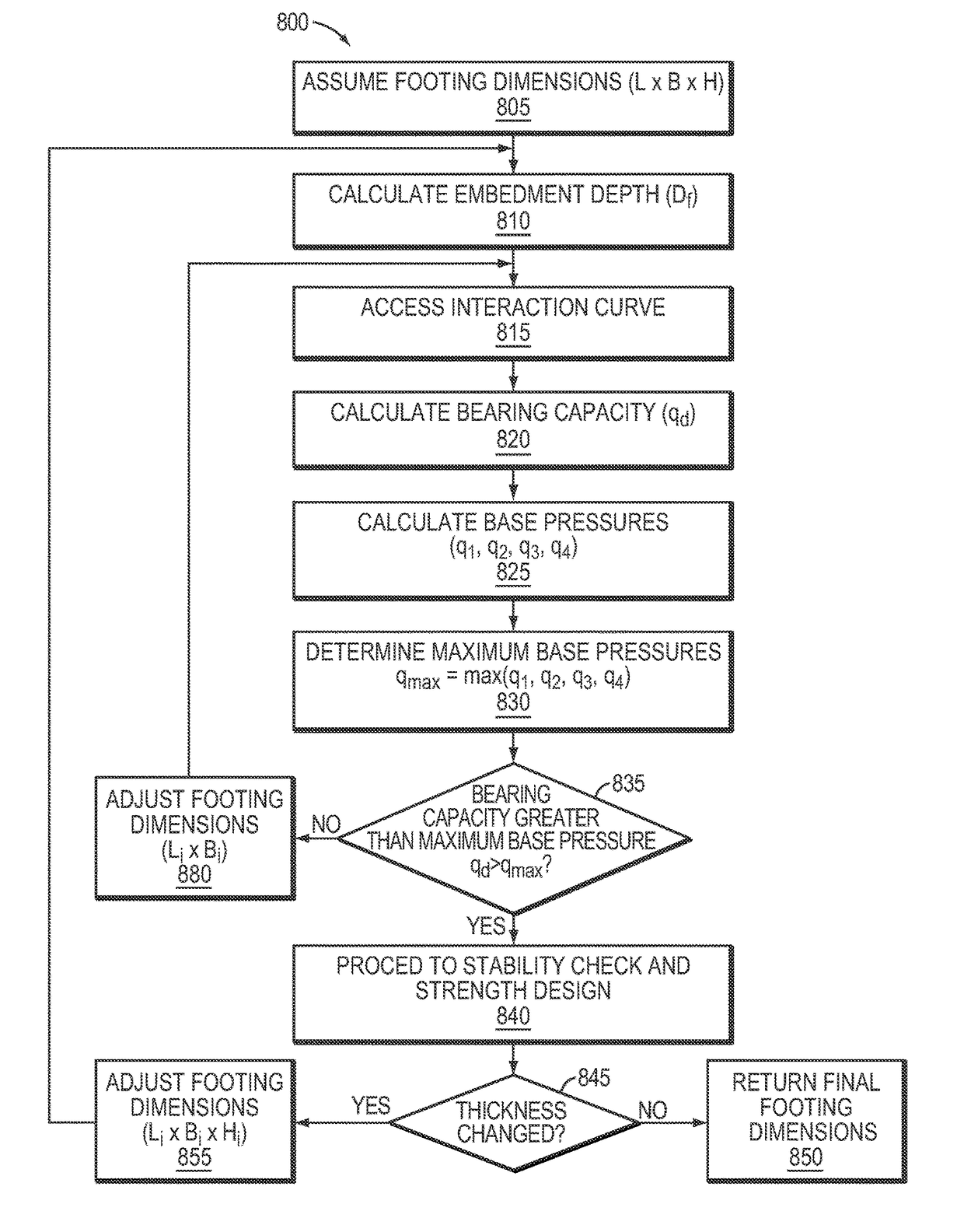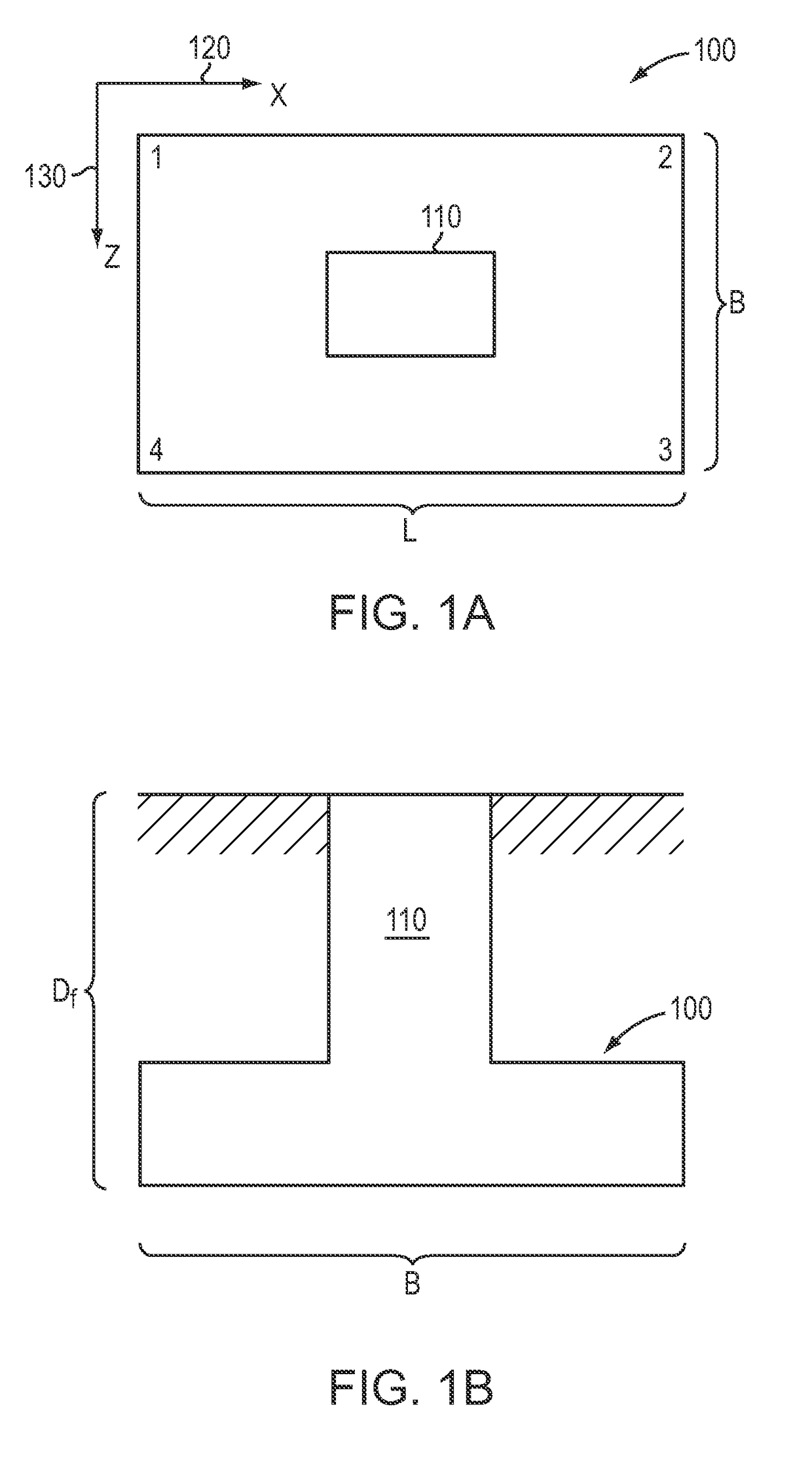Technique for using variable soil bearing capacity in foundation design
a technology of soil bearing capacity and foundation design, applied in the field of computer-aided foundation design, can solve the problems of large material cost, large amount of material cost, and large amount of material cost, and achieve the effect of small size and greater assurance of safety
- Summary
- Abstract
- Description
- Claims
- Application Information
AI Technical Summary
Benefits of technology
Problems solved by technology
Method used
Image
Examples
Embodiment Construction
[0018]The issues presented in typical foundation design may be illustrated by reference to specific examples. Much of the discussion below refers to an example of a structural engineer tasked with designing a foundation that includes a rectangular (either square or strip) isolated footing. While such example may help illustrate the computer-aided foundation design technique described herein, it should be understood that the technique is applicable to a wide variety of foundation designs that include other types of foundations structures, for instance, wall footings, combined footings, cantilever or strap footings, or other types of structures.
[0019]FIG. 1A is a top-down view of an example isolated footing 100 designed to support a single column 110. The example isolated footing 100 is defined by a footing length (L) and footing width (B), referred to collectively (along with potentially a footing height) as “footing dimensions”. The example footing has four corners, which are refere...
PUM
 Login to View More
Login to View More Abstract
Description
Claims
Application Information
 Login to View More
Login to View More - R&D
- Intellectual Property
- Life Sciences
- Materials
- Tech Scout
- Unparalleled Data Quality
- Higher Quality Content
- 60% Fewer Hallucinations
Browse by: Latest US Patents, China's latest patents, Technical Efficacy Thesaurus, Application Domain, Technology Topic, Popular Technical Reports.
© 2025 PatSnap. All rights reserved.Legal|Privacy policy|Modern Slavery Act Transparency Statement|Sitemap|About US| Contact US: help@patsnap.com



